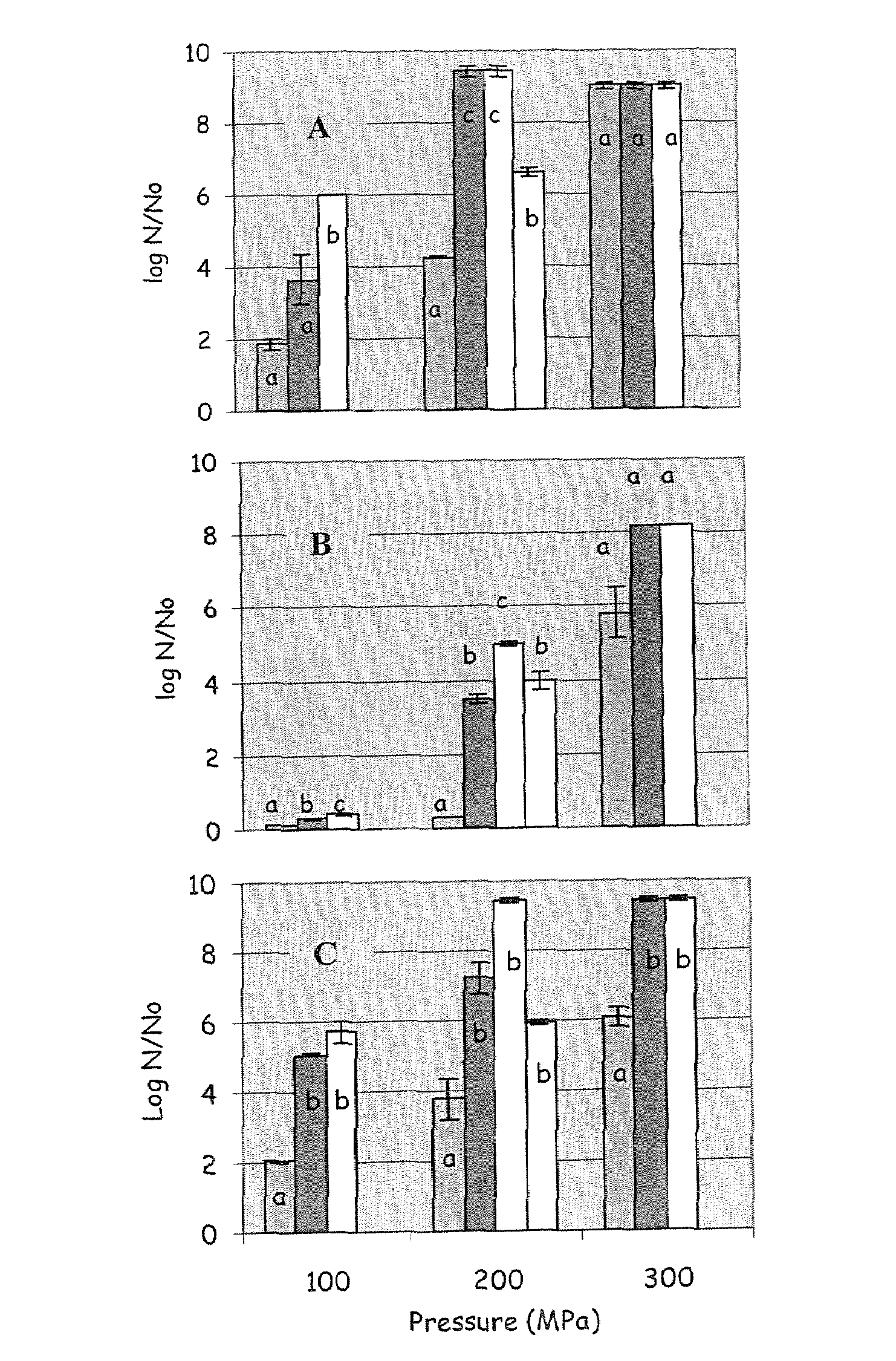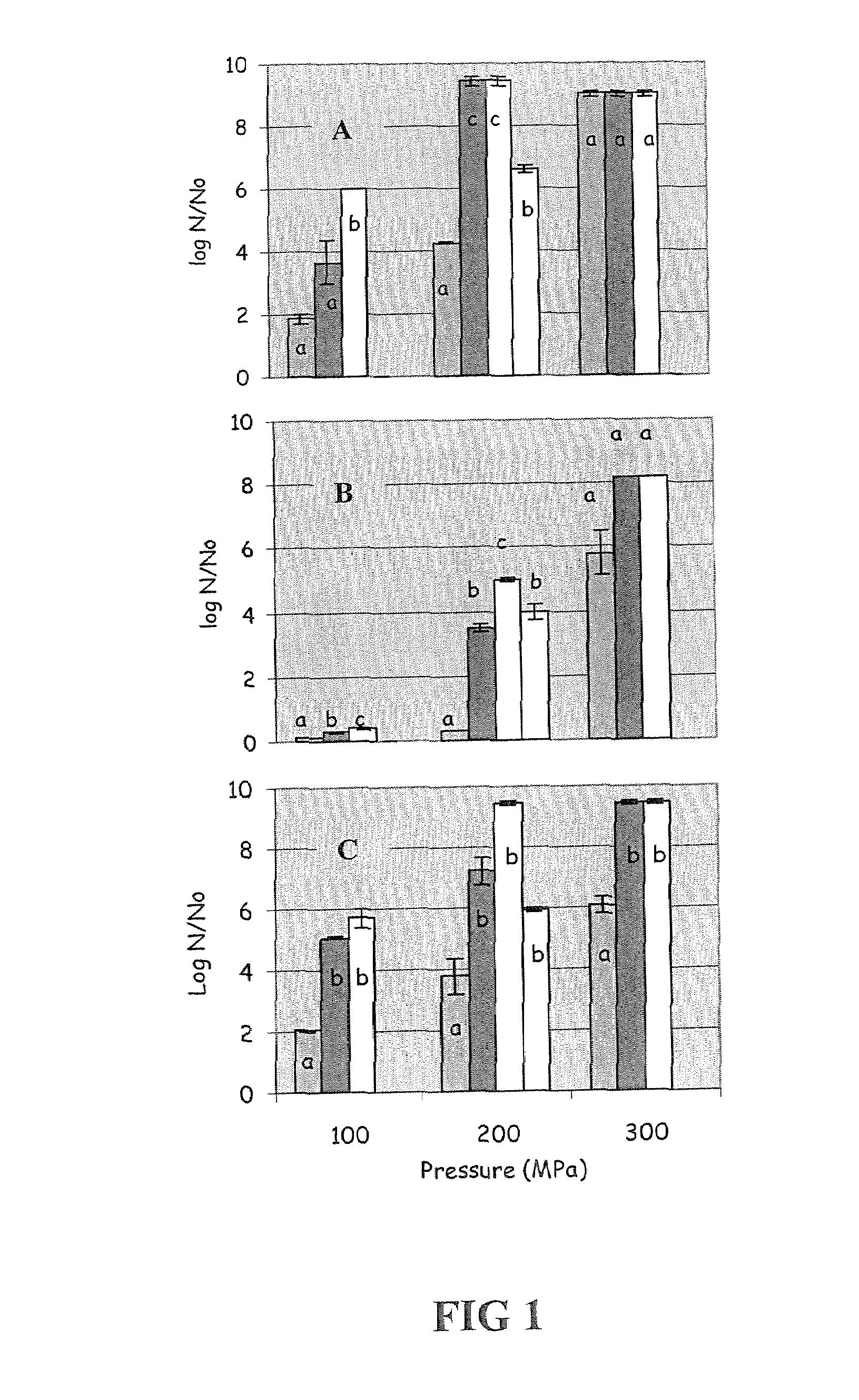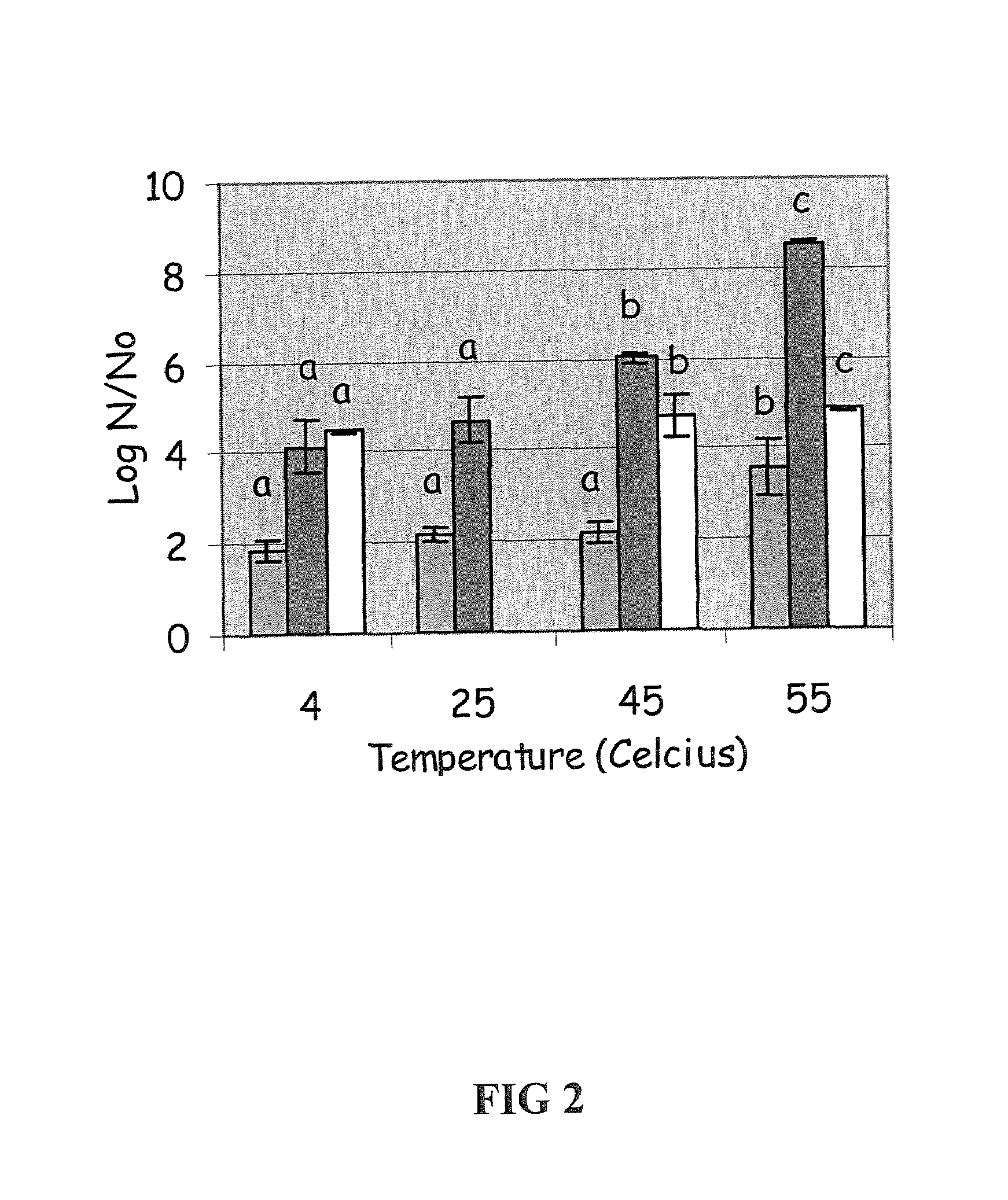Inactivation of food spoilage and pathogenic microorganisms by dynamic high pressure
a high-pressure, inactivation technology, applied in the field of inactivation of food spoilage and pathogenic microorganisms by dynamic high pressure, can solve the problems of increasing the risk of food contamination for consumers, so as to reduce the presence of microorganisms
- Summary
- Abstract
- Description
- Claims
- Application Information
AI Technical Summary
Benefits of technology
Problems solved by technology
Method used
Image
Examples
example 1
Inactivation of Some Food Pathogens Using Dynamic High Pressure
[0040]Every year, outbreaks of illnesses caused by pathogenic bacteria contaminating foods have economic repercussions throughout the world. Due to its composition and mode of production, milk is particularly susceptible to contamination by a wide variety of bacteria. When milk is secreted in the udders of ruminents, it is virtually sterile. Many milk-borne bacteria are casual visitors but find themselves in an environment where they can live and possibly proliferate. Although some of these bacteria die when competing with species which find the environment more congenial pathogenic bacteria such as Listeria, Escherichia, Salmonella, etc, can survive in milk and create dangers for the consumer.
[0041]Heat (e.g. pasteurisation) for instance pasteurisation is still the most commonly used technology to inactivate food spoilage and pathogenic bacteria in raw milk. Although effective, some bacteria may resist thermal treatment...
PUM
 Login to View More
Login to View More Abstract
Description
Claims
Application Information
 Login to View More
Login to View More - R&D
- Intellectual Property
- Life Sciences
- Materials
- Tech Scout
- Unparalleled Data Quality
- Higher Quality Content
- 60% Fewer Hallucinations
Browse by: Latest US Patents, China's latest patents, Technical Efficacy Thesaurus, Application Domain, Technology Topic, Popular Technical Reports.
© 2025 PatSnap. All rights reserved.Legal|Privacy policy|Modern Slavery Act Transparency Statement|Sitemap|About US| Contact US: help@patsnap.com



